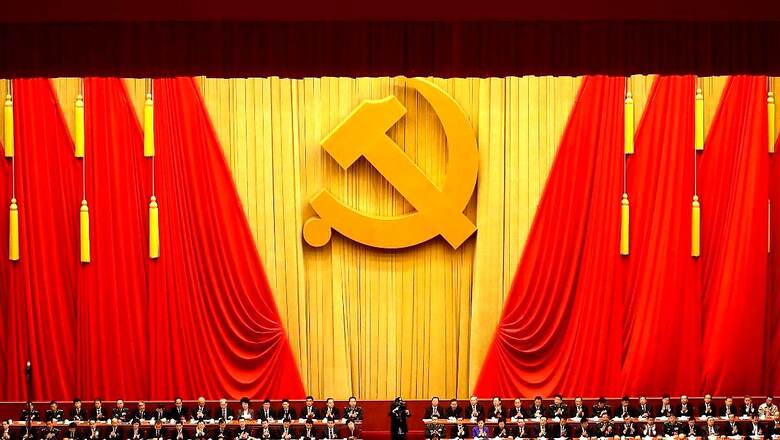
views
Like any public institution, a state’s judiciary does not operate in isolation; it is shaped by the country’s socio-political evolution. Professor Jerome A Cohen, as early as 1969, voiced concerns about the potential for judicial independence in China, given the authoritarian legacy of the Chinese Communist Party. However, he tempered his concern with cautious optimism, suggesting that once the upheaval of the 1949 revolution subsided and the party gained political and economic stability, its leaders might become more receptive to functional specialisation and judicial independence. An analysis of the party-state’s actions and intentions since the founding of the PRC indicates that judicial autonomy in China remains elusive.
Historically, China did not distinguish between executive and judicial functions, with local magistrates responsible for both. It was not until the early 20th century, under the Beiyang government, that efforts were made to modernise the judiciary based on principles such as the rule of law, judicial independence, and due process. Although the Kuomintang maintained the Beiyang era judicial reforms during its one-party rule, these were implemented in a diluted form.
However, when the Communist Party of China (CPC) took power in 1949, it issued ‘February Instruction’, nullifying all six legal codes of the National Government under the authority of the People’s Government and the People’s Liberation Army. By 1950, it was declared that courts would be treated as essential instruments of “people’s power,” akin to the Army and Police. Subsequently, the State Council Political-Legal Committee (SCPLC) launched a campaign to ideologically, institutionally, and politically “purify” judicial offices.
This involved purging ‘old laws and ideas,’ including judicial independence, and expelling a significant number of judicial officials from the National Government era, replacing them with CPC loyalists. These ‘old courts’ were transformed into ‘people’s courts,’ and the party established outposts in all political-legal institutions, such as courts and procuratorate, through Party Political-Legal Committees (PPLCs), which were tasked with overseeing, inspecting, and reporting all judicial activities to the party. Notably, Article 78 of the 1954 Chinese Constitution stated, “Courts exercise judicial power independently and only answer to the law.”
However, when the Chinese constitution was amended in 1982, Article 78 was replaced by Article 182, which now stipulated, “courts are to exercise judicial power independently and free from interference from the executive branch of the government, social organisations, and individuals”. The exclusion of the party from this list has been interpreted as allowing the party to direct judicial functions in the country. Clearly, over time, even the nominal commitment to judicial autonomy that the CPC initially exhibited has been increasingly eroded in favour of party supremacy.
The CPC is deeply embedded within the Chinese judicial system, exerting control over court activities by issuing directives on both judicial policies and specific cases. Due to the lack of a clear distinction between legislative and judicial matters in the Chinese political system, the party is incentivised to utilise the judiciary more frequently and expansively, circumventing the lengthy deliberation and voting processes associated with the legislative route. In its pursuit of advancing a singular, unquestioned, and all-encompassing vision, the party manipulates the courts to formulate judicial policy that aligns with party initiatives, either through the PPLCs or individual party leaders who issue verbal or written instructions.
Given the hierarchical nature of the Chinese regime, courts sometimes find it necessary to seek party intervention when they are unable to ensure compliance or secure resources from institutions or individuals of equal or higher rank within the system. Conversely, the party also intervenes in the judiciary to influence the outcomes of specific cases. This practice, known as ‘joint case handling,’ has been the norm since the party controlled the border regions in the 1930s.
During this period, the party directed the court, procuratorate, and police to work in unison to produce predetermined judicial outcomes, with courts required to obtain party approval for all criminal case verdicts. Although this requirement was abolished after the Cultural Revolution with the issuance of the ‘No. 64 Document,’ which ended the mandatory case-approval process, the party retained its authority to intervene in significant cases through procedures such as case coordination and case supervision.
While CPC’s interference in judicial policy has largely been accepted as inevitable among Chinese intellectuals, the party’s supervision and manipulation of individual cases have sparked significant outrage. This discontent reached its zenith in the 2000s when a series of cases under the PPLCs’ ‘coordination’ were exposed as false convictions. The public outcry led to a 2013 regulation by the CPPLC (Central Party Political-Legal Committee) addressing false convictions, though these reforms have been largely superficial. In addition to this, the party maintains strict control over judicial appointments to ensure the selection of loyalists and exerts influence over legal interpretation and reform.
In recent decades, some progress has been made, with the ongoing efforts of the Chinese legal community and the increasing professionalization of judges leading to improvements in judicial impartiality, particularly in less contentious civil and commercial cases.
During the first decade of 21st century, a series of judicial reforms were introduced, under Xi Jinping’s leadership, purportedly aimed at enhancing judicial autonomy and accountability, which garnered significant scholarly interest. These reforms included measures such as recording and documenting the deliberations of judicial committees, shifting the authority for funding local courts and appointing judges from the local to the provincial level to reduce localised influence, and requiring judges to personally sign their judgments.
However, these changes appear to serve more as a facade to mitigate criticism regarding judicial inefficiency, corruption, and repression. In reality, the 2021 political-legal rectification campaign mandated that judges undergo compulsory political education, with those found disloyal to the Party facing dismissal from their positions.
Thus, while the Chinese regime, which has significantly exploited the judiciary to advance its own objectives, may superficially introduce ‘reforms’ under the banner of ‘rule of law with Chinese characteristics’, these changes are unlikely to be substantive. As long as the party-state structure remains unchanged, it is unrealistic to expect the judiciary to operate independently from Party directives.
The writer is an author and columnist and has written several books. His X handle is @ArunAnandLive. Views expressed in the above piece are personal and solely those of the author. They do not necessarily reflect News18’s views.



















Comments
0 comment